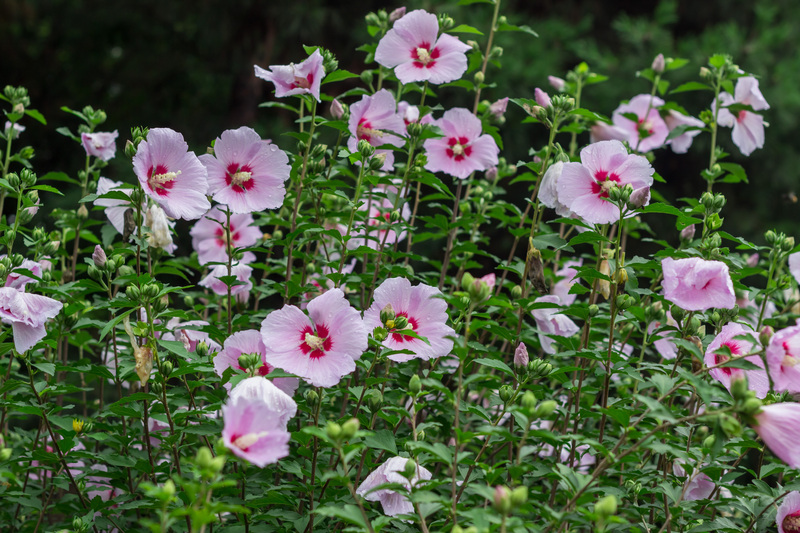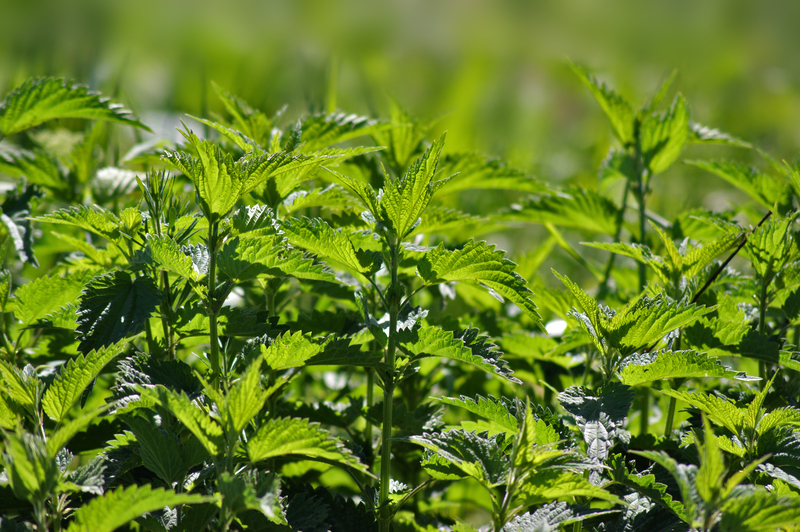Top Tips for Cleaning Your Artificial Grass Like a Pro
Posted on 13/10/2025
Top Tips for Cleaning Your Artificial Grass Like a Pro
Artificial grass has become increasingly popular for lawns, gardens, and play areas due to its low maintenance and lush, green appearance all year round. Whether you've recently installed synthetic turf or have enjoyed its benefits for years, knowing how to clean artificial grass properly is essential for keeping it looking vibrant and fresh. In this comprehensive guide, we'll share professional tips and techniques that will help you maintain and clean your artificial lawn like a true expert.

Why Maintain and Clean Artificial Grass?
While synthetic grass is incredibly durable and resistant to weather and wear, it still needs basic upkeep to maintain its beauty and longevity. Here's why regular cleaning is vital:
- Preserves the vibrant color and appearance of your artificial turf.
- Keeps the surface hygienic, especially if kids and pets use the area.
- Prevents odors caused by debris, pet waste, and bacteria.
- Minimizes damage from organic material, mold, or weed growth.
- Prolongs the life of your investment.
Let's dive into the best methods for cleaning synthetic grass and discover professional techniques to achieve outstanding results.
Essential Tools for Artificial Grass Cleaning
Before starting the cleaning process, make sure you have the following tools ready:
- Stiff-bristled broom or brush: For removing debris and fluffing fibers.
- Plastic rake: Ideal for larger areas and gentle on artificial blades.
- Garden hose (with spray nozzle): For rinsing dust and pet waste.
- Leaf blower: Helps to quickly remove leaves and small debris.
- Specialized artificial grass cleaner (optional): For deep cleaning and deodorizing.
- Pet waste bags and scoopers: Especially important for pet owners.
- Mild detergent or homemade cleaning solution: For spot cleaning spills and stains.
Routine Cleaning: How to Keep Artificial Grass Looking Fresh
For most households, regular maintenance involves quick and easy tasks. Follow these steps weekly or bi-weekly for best results:
1. Remove Debris and Litter
- Pick up leaves, twigs, and other litter by hand or with a leaf blower.
- Inspect the surface for any trash, stones, or objects that could damage the turf.
- Regular removal prevents organic matter from breaking down and causing odors.
2. Brush and Fluff Up the Artificial Turf
- Use a stiff-bristled broom or a plastic rake to brush the fibers in different directions.
- This process redistributes the infill, prevents matting, and keeps grass blades upright.
- Fluffing is especially important in high-traffic areas where turf may flatten over time.
3. Rinse Off Dust and Pollen
- Rinse the area with a garden hose to remove dust, pollen, and small debris.
- Ensure proper drainage: Artificial turf is designed for quick drainage, but check for any blockages under the surface.
- Rinsing is particularly beneficial after dry, windy, or pollen-heavy days.
Deep Cleaning Your Artificial Lawn: Pro Techniques
For a more thorough clean, especially after parties, wet weather, or pet activity, try these advanced cleaning methods for synthetic grass:
1. Removing Stubborn Stains
- Act quickly: Blot up spills right away with a clean, absorbent cloth.
- Mix a solution of mild dish soap and warm water. Gently scrub the affected area with a soft brush.
- For tougher stains (such as paint, oil, or gum), use a solution of 3% hydrogen peroxide and rinse well with water.
- Avoid harsh chemicals like bleach, which can damage synthetic fibers.
2. Treating and Deodorizing Pet Waste
- Solid Pet Waste: Pick up waste as soon as possible using bags or scoopers.
- Urine Odor Removal: Rinse the affected area thoroughly with water. Use an enzyme-based artificial grass cleaner if odors persist.
- For a natural deodorizer, sprinkle a mix of baking soda and water, let sit, then rinse away.
- Regular pet waste removal prevents bacteria buildup and keeps your lawn smelling fresh.
3. Handling Mold, Moss, or Algae Growth
- Check shaded or damp areas for signs of moss or algae.
- Apply a 1:1 mix of vinegar and water to the affected patch. Brush gently and rinse thoroughly.
- Specialized artificial turf anti-microbial sprays are also available for recurring problems.
- Monitor regularly, as moisture and organic debris can encourage growth.
4. Eliminating Weeds in Synthetic Turf
- Although weed penetration is minimal, occasionally some may appear at the edges or through small holes.
- Pull weeds by hand or use a gentle, non-toxic weed killer if needed--avoid products with strong acids or solvents.
- Check the turf edges and joints for any uplifted areas that could allow weed seeds to settle.
- Apply a weed membrane beneath the turf for enhanced protection during installation.
Extra Pro Tips for Cleaning Artificial Grass
To keep your synthetic lawn looking as great as the day it was installed, consider these expert tips:
Choose the Right Cleaning Solutions
- Avoid corrosive or solvent-based cleaners: These may damage turf fibers or the latex backing.
- Use gentle, environmentally friendly products formulated for artificial turf care.
- For pet owners, look for enzyme-based turf deodorizers that break down organic odors naturally.
Be Mindful of Heavy Objects and Vehicles
- Keep vehicles off synthetic grass: Pressure can compress infill and flatten fibers permanently.
- Avoid placing heavy objects (like inflatable pools or furniture) for extended periods, as they can leave impressions.
Maintain Infill Levels
- Periodically check the infill: If your turf uses sand or rubber infill, top it up if you see exposed backing or notice uneven surfaces.
- Evenly distributed infill supports each blade and improves cushioning.
Inspect and Repair Turf Seams
- Walk along the seams and edges occasionally to ensure they remain flush.
- If you notice lifted edges or seams: Tuck them back into place and secure if necessary.
- Early repair prevents weed growth and avoids trip hazards.
Invest in Professional Artificial Grass Cleaning (Optional)
- Annual or bi-annual deep cleaning services are available from turf specialists.
- These services may include power brushing, infill addition, deep disinfection, and stain removal, providing an intense, rejuvenating clean.
Cleaning Artificial Grass in Different Situations
After Heavy Rain or Wind
- Inspect for debris and clear it away. Check for any drainage issues or turf displacement.
- Brush the grass fibers to restore their upright position.
Following Outdoor Gatherings or Parties
- Remove any spilled food, drink, or litter promptly to avoid staining the turf.
- Hose down areas with sticky residues and scrub gently if needed.
- Odor-removing turf sprays are ideal after busy events.
During Autumn or Leaf-Fall
- Increase frequency of leaf blowing or raking to prevent organic build-up.
- Leaves can cause discoloration or mold if left to rot on the turf.
With Children and Pets
- Spot clean messes as soon as they occur.
- Rinse regularly to keep the surface hygienic and odor-free.
- Choose non-toxic, child- and pet-safe cleaners for peace of mind.

Frequently Asked Questions About Artificial Grass Cleaning
1. Can I use a vacuum to clean my artificial grass?
While small handheld vacuums can pick up loose debris, avoid using upright or heavy vacuum cleaners as they may damage the turf or displace the infill.
2. How often should I clean my fake grass?
For general maintenance, plan a quick tidy-up every week. Deep cleaning is best every 1-2 months, or more often if you have pets or during certain seasons.
3. Are there any cleaning products I should never use?
Do not use bleach, ammonia, or strong solvents on your artificial lawn. Stick to mild soaps, vinegar, or specialized artificial turf cleaners for safe maintenance.
4. Does artificial grass grow mold or mildew?
Mold and mildew are rare thanks to the excellent drainage of synthetic lawns. However, if organic matter or moisture accumulates, mold may form. Prompt removal and occasional vinegary rinses can help prevent this issue.
Conclusion: Enjoy a Clean and Gorgeous Artificial Lawn All Year Long
With the right techniques and regular upkeep, maintaining artificial grass is simple and rewarding. By following the top tips for cleaning your artificial grass like a pro, your synthetic lawn will stay green, clean, and inviting through every season. Keep your tools handy, address messes quickly, and invest in an occasional deep clean--for results that impress neighbors and guests alike.
If you're considering installing artificial grass or need further help with maintenance, always consult with professional turf suppliers or care services. With good care, your artificial lawn will provide years of durable beauty and enjoyment--with minimal hassle and maximum satisfaction.




